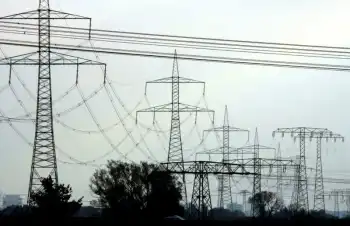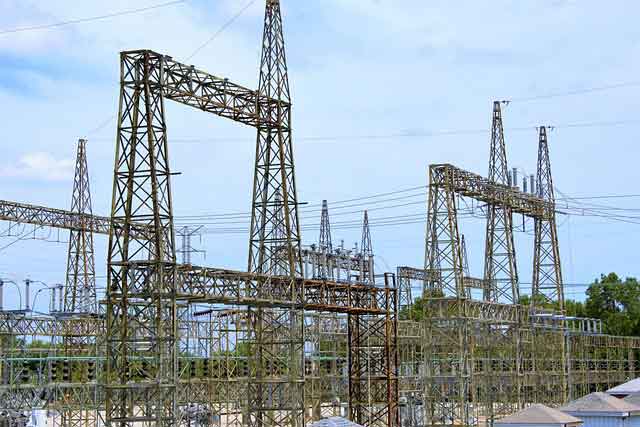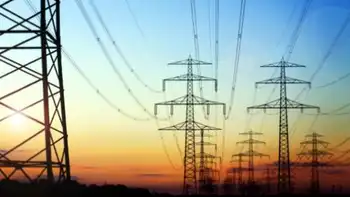DOE awards $92 million for energy research
WASHINGTON D.C. - U.S. Secretary of Energy Steven Chu has announced 43 research projects that aim to improve how the United States uses and produces energy.
Funded with $92 million from the American Recovery and Reinvestment Act through the U.S. Department of Energy's DOEÂ’s Advanced Research Projects Agency-Energy ARPA-E, project selections focus on accelerating innovation in green technology while increasing U.S. competitiveness in grid scale energy storage, power electronics, and building efficiency.
The projects are based in 18 states 36 percent of projects are led by universities, 33 percent by small businesses, 24 percent by large businesses, 5 percent by national labs, and 2 percent by non-profits. These awards complete ARPA-E's grants under its Recovery Act funding: In three rounds of awards since last year, the agency has selected a total of 117 projects for $349 million in funding, supporting research that can deliver changes in how the U.S. generates, stores, and utilizes energy.
The topic areas for the latest projects announced include:
Grid-Scale Rampable Intermittent Dispatchable Storage GRIDS
Affordable, large-scale energy storage could change the game for the U.S. electrical grid. In particular, energy storage will be needed to enable the widespread use of two renewable energy sources: wind and solar power. This program seeks to develop new storage technologies that exhibit energy, cost, and cycle life comparable to pumped hydropower, but that are modular and can be implemented at any location across the power grid. Ultimately, technologies developed through this program will be scalable to the gigawatt and gigawatt-hour levels of power and energy capacity. This technology development program complements other DOE electrical energy-storage efforts by focusing on early stage prototyping and proof-of-concept research and development efforts.
One of the GRIDS projects being funded is:
• General Atomics in San Diego, Calif. — Soluble Acid Lead Flow Battery.
General Atomics and the University of California San Diego will develop a flow battery technology that pumps chemicals through the battery cell when electricity is needed. The proposed flow battery can achieve the low cost, high efficiency, and reliability needed for use on the electric power grid. This technology development program will use materials that increase power while resisting the corrosion that limits the cycle life of conventional lead acid batteries. The goal is to create a battery that can be scaled for grid-scale energy storage but costs less and performs far longer than current technologies. This project will receive $2 million in funding.
Agile Delivery of Electrical Power Technology ADEPT
A large portion of the electricity we generate is lost before we can use it. ADEPT is focused on improving the efficiency and cost of power conversion and switching, which are among the main causes of electrical efficiency loss across the electrical grid and in electrical applications from cars to computers. The ADEPT projects explore integrated circuits that incorporate high-voltage transistors and high-performance magnetic materials in applications, such as drivers for light-emitting diodes that are 300 times smaller, power supplies for computers that are 10 times smaller, and lightweight chargers for electric vehicles. These components will enable miniaturization, increased efficiency, and reduced costs. ADEPT also is focused on creating high-voltage transistors that can allow the electricity grid to be used like a large, controllable circuit.
One of the ADEPT projects being funded is:
• Cree Inc. in Durham, N.C. — Silicon Carbide Power Modules for Grid Scale Power Conversion.
This project will develop transistors for electrical substations that can make the electrical grid more flexible and controllable. Using silicon carbide, these transistors could achieve record high voltage 15 to 20 kV. With these advanced transistors, electrical substations could replace current massive distribution transformers 8,000 lb with smaller, suitcase-sized electronic transformers 100 lb. This project will receive $3.7 million in funding.
Building Energy Efficiency Through Innovative Thermodevices BEET-IT
Buildings consume 40 percent of the primary energy in the United States and account for approximately 40 percent of our carbon-dioxide CO2 emissions. Cooling is one of the major uses of energy in buildings, yet the basic approaches used for cooling have not changed in decades. New efficient methods of cooling represent an opportunity to reduce energy consumption and greenhouse-gas emissions from buildings. Additionally, the refrigerants currently used in cooling are a potent source of greenhouse-gas emissions, as much as 1,000 times as powerful as CO2. The BEET-IT program is focused on developing new approaches and technologies for cooling in buildings to improve energy efficiency and reduce the use of refrigerants and their impact on climate change.
One of the BEET-IT projects being funded is:
• Battelle Memorial Institute in Columbus, Ohio — Absorption-Osmosis Cooling Cycle.
This project will develop a new air-conditioning system using water as a refrigerant—instead of typical chemicals that are potent greenhouse gases—and using salt as the heat absorber. The system uses reverse osmosis to separate water from the salt solution. This approach is different from traditional cooling technologies that use mechanical compressors and has the potential to increase the energy efficiency of air conditioning by more than 50 percent. This project will receive $400,000 in funding.
ARPA-E received 529 initial concept papers and encouraged approximately 164 applicants to submit full applications. Multiple review panels composed of U.S. science and technology experts reviewed each proposal and made recommendations based on scientific and technical merit and the potential to advance national energy and economic goals. Potential additional applications for funding innovative research projects are pending further review.
Related News

Alberta's Path to Clean Electricity
ALBERTA - In a recent development, Alberta finds itself at a crossroads between provincial autonomy and federal mandates concerning clean electricity regulations. The province, known for its significant oil and gas industry, faces increasing pressure to align its energy policies with federal climate goals set by Ottawa.
The federal government, under the leadership of Environment Minister Steven Guilbeault, has proposed regulations aimed at reducing greenhouse gas emissions and transitioning towards a cleaner energy future. These regulations are part of Canada's broader commitment to combat climate change and achieve net-zero emissions by 2050.
The Federal Perspective
From Ottawa's standpoint, stringent regulations…




